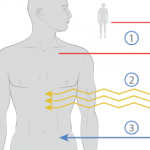Unlike Dolly, who was housed indoors for security reasons, today’s clones live mainly outside, which may be one factor behind their relative health, because sheep kept in barns can be susceptible to infections.
Cloning is already used in some U.S. food production, although not in Europe. But the big hope is to produce human stem cells that could replace damaged tissue in devastating conditions, such as Parkinson’s disease or spinal cord injuries.
Work on stem-cell medicine has been hobbled in the past by technical challenges as well as ethical issues but it received a boost three years ago when biologists finally created human stem cells using the same process that produced Dolly.
Until then, the most natural source of human stem cells was human embryos left over from IVF treatment, whose use in research is controversial.
Another approach involves adding genes to adult cells to turn back their biological clocks, creating so-called induced pluripotent stem cells that behave like embryonic ones. The long-term safety of these cells has still to be established.
